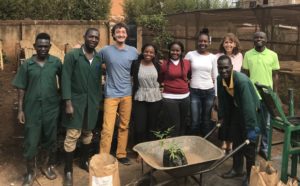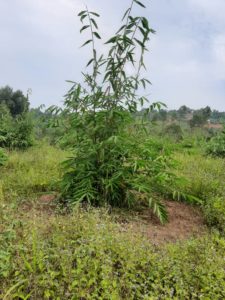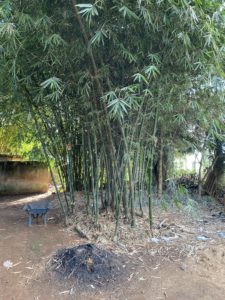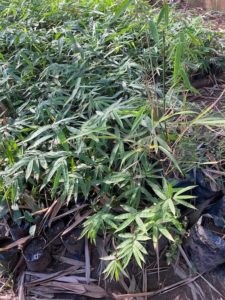Clean Energy Companies Turn to Bamboo as a Renewable Resource
Use of Wood Fuel is Still Prevalent
Over 80% of sub-Saharan Africans are still relying on wood or wood charcoal for household energy needs. A large swath of the population still lack access to affordable modern cooking fuels, like electricity, LPG or ethanol. Dependence on wood based fuels leads to deforestation and degradation and contributes to air pollution and respiratory health problems.
But many clean energy companies are trying to change that by making charcoal from alternative sources that don’t involve cutting down trees. Charcoal briquettes can be made from many different types waste streams, such as kitchen waste, agricultural waste or charcoal dust. But, to have a truly sustainable product, the raw ingredients for the briquettes need to be renewable.
Enter bamboo into the equation. Bamboo, that unruly plant that many people regret having planted in their gardens, is fast growing and hardy and can be grown in poor quality soil. The bamboo can be easily coppiced (pruned) for use after 3-5 years. A eucalyptus tree, on the other hand, which is commonly planted for timber, needs 8-10 years to reach maturity. Bamboo has many uses in addition to fuel, including construction poles, textiles, and cultural products.
Bamboo is Fast Growing and Truly Renewable

As reported by Divine Nabaweesi, CEO of Divine Bamboo in Uganda, “The biggest advantage we see to using bamboo as a feedstock for biomass fuels is that it is incredibly sustainable: it is the fastest growing woody plant on earth, it is ready for harvest in just 4 years and regenerates every year after harvest. Moreover, bamboo does not require pesticides or fertilizers to grow and best of all is indigenous in many parts of Africa including Uganda.”
Recognizing her important work using bamboo for energy, Divine Bamboo was selected as an Energy Access Booster for 2o2o. The award, sponsored by TOTAL, ENEA Consulting, Acumen and Sustainable Energy for All, provides investment dollars and consulting support for awardees.

Many briquette producers use waste from the charcoal trade or char dust in their briquettes. Increasing competition for this waste stream has sent producers searching for an alternative. Ugandan clean energy entrepreneur, Virginia Ssemakula of Goodfire Ltd., recently planted bamboo as a way to ensure a consistent source of feedstock for her biomass briquettes. Virginia also grows eucalyptus trees. Despite the fact that the eucalyptus was planted several years ago, the bamboo will be ready for use much more quickly.
New Support for Bamboo Producers
International development players as well as governmental bodies want to harness the power of bamboo. The Ugandan government has been encouraging investment in bamboo and in 2019, has recommended that 290 billion Ugandan Shillings ($80 million) be set aside to promote the growth of bamboo. In this new initiative, the government seeks to create an alternative to fuel wood, raw materials for paper making, increase forest cover there by addressing climate change and also export raw and finished products from the trees. The initiative will seek to increase bamboo coverage to 375,000 hectares in the next 10 years which is expected to bring in $200 million in revenue.
Many Uses of Bamboo Including Fuel
To help understand this opportunity, and have other clean energy companies turn to bamboo, The Charcoal Project recently hosted a workshop/networking event for char briquette producers in Uganda. In addition to other speakers, Flavia Munaaba Nabugere of the Uganda Bamboo Association (UBA) spoke to the group about the benefits of growing bamboo for energy and other uses. According to Flavia, the market for bamboo is large – worth $60 billion worldwide – and bamboo has over 10,000 uses. There are 1,642 varieties of bamboo, and of that, 1,521 are woody bamboo species.

Bamboo is particularly useful for energy needs because it can be burned directly (like wood), made into charcoal (using the stems), or made into charcoal briquettes (stalks and other waste). With the proper kilns, other byproducts can be produced from the carbonizing process, including wood vinegar, tar and methane for cooking gas. Flavia has a demonstration site for these by products and other uses of bamboo at her home outside of Kampala, where UBA is headquartered.
In addition to energy uses, the bamboo offers income generating activities, that include selling seedlings, building furniture, handicrafts, utensils and dishware, chop sticks and tooth picks, to name a few. One large bamboo plant, can generate many seedlings in a year, which can be sold in Uganda for 2,500 – 5,000 Ugandan shillings apiece.
Bamboo Mitigates Climate Change Impacts
Bamboo can mitigate climate change impacts by improving degraded soil, reducing erosion on river banks and other degraded lands and by sequestering carbon.

Bamboo is extremely useful for sequestering carbon, because of its multiple shoots and dense growth. It also produces 35% more oxygen than other trees. Bamboo sequesters 53.22 tons of CO2 per hectare per year compared to 11.8 tons for pine and 8-10 tons for eucalyptus, according to UBA. Because most species of bamboo are so hardy, planting on degraded land produces the double impact of rehabilitating the soil and sequestering carbon. It also avoids competing with food for scarce arable land.
At The Charcoal Project, given all of the possibilities for using bamboo for fuel and to sequester carbon, we are very excited about bamboo as a sustainable feedstock for charcoal briquette producers and would love to see more clean energy companies turn to bamboo. Stay tuned as we follow this trend and report back on the endeavors of producers using bamboo as feedstock.
For the full presentation video of the presentation by Flavia Munaabe Nabugere, click here to view.



Great info you have shared here. According to time change , this one also to be changed. Thanks for sharing this with us.